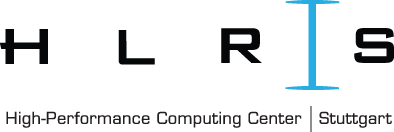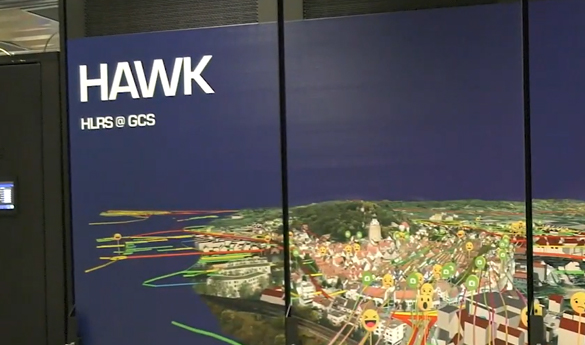 Add the High Performance Computing Center at the University of Stuttgart (HLRS) to the list of supercomputing organizations going from CPU-only to CPU-GPU architectures.
Add the High Performance Computing Center at the University of Stuttgart (HLRS) to the list of supercomputing organizations going from CPU-only to CPU-GPU architectures.
HLRS announced this morning it will add Nvidia graphic processing units to its Hawk supercomputer, a Hewlett Packard Enterprise Apollo system installed last February. One of Europe’s most powerful HPC systems, it ranks 16th on the current Top500 list of the world’s fastest supercomputers, based on the High Performance Linpack (HPL) benchmark.
The center said it will add 24 HPE Apollo 6500 Gen10 Plus systems with 192 Nvidia A100 GPUs based on the Ampere architecture, adding 120 petaflops of AI performance for deep learning, high performance data analytics and machine learning applications, along with combining HPC simulation and Big Data methods.
“At HLRS our mission has always been to provide systems that address the most important needs of our key user community, which is largely focused on computational engineering,” explained HLRS Director Dr.-Ing. Michael Resch. “For many years this has meant basing our flagship systems on CPUs to support codes used in computationally intensive simulation. Recently, however, we have seen growing interest in deep learning and AI, which run much more efficiently on GPUs. Adding this second key type of processor to Hawk’s architecture will improve our ability to support scientists in academia and industry who are working at the forefront of computational research.”
 HLRS noted that DL algorithms typically require the generation of enormous amounts of training data as input — a task suited to large, CPU-based systems such as Hawk. Conversely, models created using deep learning on GPU-based systems can help researchers more efficiently sift through massive datasets to find insights. The center said its users have begun investigating how such hybrid approaches could accelerate research in computational fluid dynamics, combustion, robotics, manufacturing and other fields.
HLRS noted that DL algorithms typically require the generation of enormous amounts of training data as input — a task suited to large, CPU-based systems such as Hawk. Conversely, models created using deep learning on GPU-based systems can help researchers more efficiently sift through massive datasets to find insights. The center said its users have begun investigating how such hybrid approaches could accelerate research in computational fluid dynamics, combustion, robotics, manufacturing and other fields.
“Once the Nvidia GPUs are added to Hawk, hybrid workflows combining HPC and AI will become much more efficient,” said Dennis Hoppe, who leads artificial intelligence activities at HLRS. “Losses of time that occur because of data transfer between different computing systems and the need to run different parts of the workflows in separate stages will practically disappear. Users will be able to stay on the computing cores they are using, run an AI algorithm, and integrate the results immediately.”




